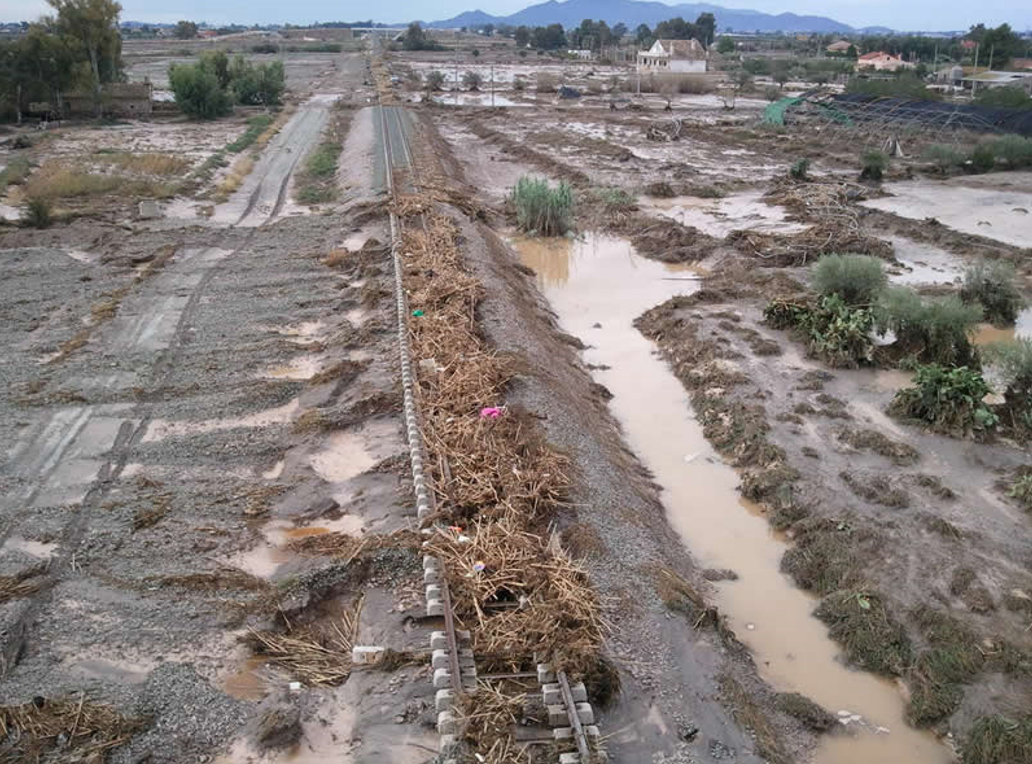The history of the origin of the railway and its technical constraints led to the predominance of seeking river valleys in the design of its layout to take advantage of the benefits of their flatness and facilitate the acquisition of construction material for the platform. While, at the time of its construction, this approach was an essential advantage that allowed for rapid development, currently, its operation by ADIF is significantly affected by problems related to flooding. The study focuses on the use of two-dimensional hydraulic models of rainfall on a mesh to determine the potential flood risk, specifically for the approximately 12,850 km of conventional network (Iberian and metric gauge) operated by ADIF throughout the national territory. The objective of the work is to discretize potential flood risk through a traffic light classification based on the degree of impact on the infrastructure, aiming to assist ADIF in prioritizing and managing rail operations against this threat.
Due to using a rainfall-based methodology, the reference for the calculation has been based on hydrographic basins. The study has covered an approximate area of 500,000 km2, analyzing almost the entire Spain. The analysis has been customized for the railway network, which has involved creating an envelope of flood zones from different simulations conditioned by concentration times determined by the intersection of the railway layout with the water network. More than 500 hydraulic simulations were required to obtain the flood areas.
The results obtained enhance and improve the understanding of the potential flood risk to the conventional and narrow-gauge railway infrastructure managed by ADIF. This enables: 1) improvement of contingency systems and protocols against the flood risk, both in sections of the network where historical floods have occurred and in areas that have not yet manifested such events; 2) planning detailed studies in areas of potential flood risk that are highly sensitive, to analyze and propose different types of solutions (structural and/or non-structural) to reduce or eliminate their consequences; and 3) progress in initiatives aimed at providing a more resilient service with a responsible strategy. The methodology allows alignment with new European sustainability and resilience guidelines, making it directly compatible with possible future studies on climate change.

Calle Núñez de Balboa, 120
28006 Madrid
Spain
Tu privacidad es importante
Nosotros y nuestros partners usamos cookies para personalizar el contenido y pueden recopilar información no confidencial. Para más información visita las Condiciones de uso.